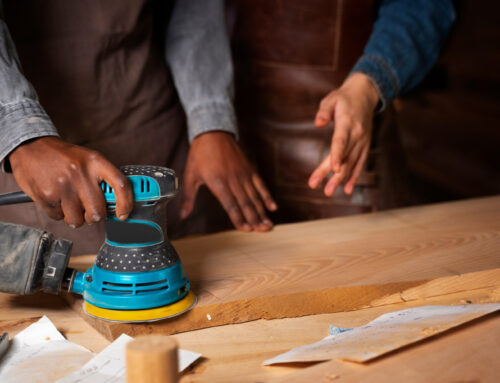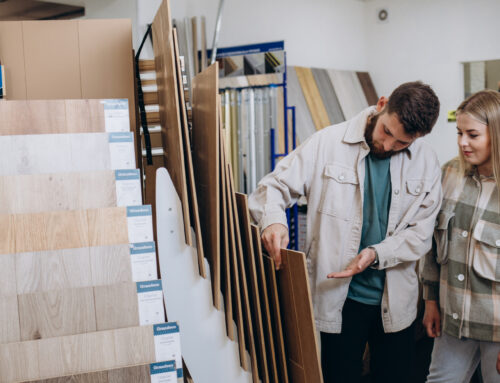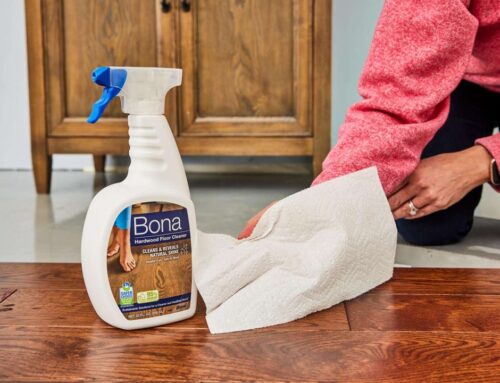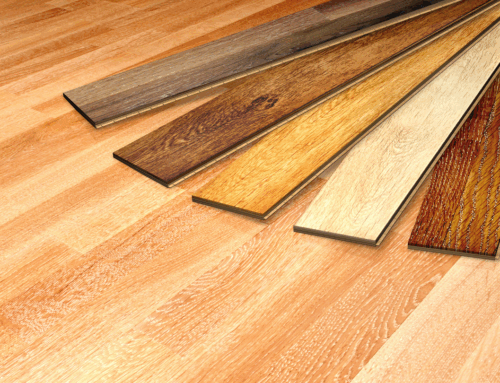Engineered hardwood flooring with a thick wear layer (3mm to 6mm), dense wood species like hickory or white oak, and quality multi-ply construction lasts 40 to 80 years with proper care. The veneer thickness, core stability, and finish quality determine how long your floor withstands daily wear.
Choosing the right engineered hardwood flooring means understanding what makes some floors last decades while others wear out in just a few years. Your flooring investment should serve your family for generations, not just a handful of years before needing replacement.
The difference between a floor that lasts 20 years and one that lasts 60 years often comes down to three factors:
- Wood species hardness
- Wear layer thickness
- Construction quality.
Getting these right means your floor handles everything from dropped toys to pet claws without showing its age.
What Makes Engineered Hardwood Last?
Engineered hardwood flooring durability depends on its layered construction, wear layer thickness, and core stability. These three elements work together to resist warping, denting, and moisture damage over decades of use.
Construction and Layering
Engineered hardwood flooring consists of a hardwood veneer bonded to multiple layers of plywood or high-density fiberboard. The best floors use 7 to 11 layers of cross-directional plywood that resist expansion and contraction.
Three construction types exist:
- Three-ply construction uses three thick layers and works well for floating installations
- Multi-ply construction uses 5 to 11 thin layers for maximum stability
- HDF core floors are often used in budget-friendly options, but can be stable and durable if manufactured properly.
Multi-ply construction with cross-directional layers provides the best dimensional stability. Each layer runs perpendicular to the one above it, canceling out the natural expansion tendencies of wood. This construction method keeps your floor flat and stable even when humidity fluctuates throughout the year.
Pro Tip:
When shopping for flooring, ask to see a cross-section of the plank. Count the layers and check if they run in alternating directions. More layers generally mean better stability and longer lifespan.
Veneer (Wear Layer) Thickness
The wear layer is the top hardwood surface that you see and walk on daily. Thicker wear layers last longer because they withstand more floor sanding and refinishing over the floor’s lifetime.
Wear layer thickness ranges from 0.6mm to 6mm:
- 0.6mm to 2mm allows one light sanding or no refinishing
- 3mm to 4mm supports two to three refinishing cycles
- 5mm to 6mm handles four to five refinishing cycles
A 4mm wear layer on a hickory plank can last 60 to 80 years under ideal conditions with proper care and maintenance. You can refinish it multiple times to remove scratches, dents, and worn finish without replacing the entire floor.
Thinner wear layers under 2mm limit your options when damage occurs. Once the finish wears through or deep scratches appear, you must replace those planks rather than sand and refinish them.
Importance of Core Quality and Finish
The core layers beneath the wear layer determine how well your floor resists moisture and maintains its shape. Baltic birch plywood cores offer exceptional strength and moisture resistance compared to softwood cores or particleboard.
Quality cores prevent:
- Warping from humidity changes
- Delamination, where layers separate
- Telegraphing where seams show through the surface
- Structural failure under heavy furniture
Factory-applied finishes protect the wear layer from water, scratches, and UV damage. Aluminum oxide finishes provide superior durability compared to polyurethane alone. Look for floor finishes with multiple coats and UV inhibitors that prevent fading.
Types of Long-Lasting Engineered Hardwood
Certain wood species naturally resist denting, scratching, and wear better than others. The Janka hardness scale measures wood density, with higher numbers indicating harder, more durable wood. Choosing a hardwood species extends your floor’s lifespan significantly. A hickory floor withstands impacts that would dent softer species like pine or fir.
Hickory Engineered Hardwood Flooring
Hickory rates 1820 on the Janka hardness scale, making it one of the hardest domestic wood species available. This exceptional hardness means hickory hardwood flooring resists dents from dropped items, pet claws, and furniture movement.
Hickory’s bold grain patterns and color variation hide minor scratches and wear better than uniform wood species. The natural character marks blend with any new dings or marks that develop over the years of use.
Hickory works exceptionally well for:
- Entryways and mudrooms with heavy foot traffic
- Homes with large dogs
- Kitchen floors near appliances
- Family rooms with active children
The dramatic grain patterns and honey to brown tones add rustic warmth to any space. Hickory accepts stains well if you prefer darker tones, though many homeowners love its natural appearance.
Maple Engineered Hardwood Flooring
Maple scores 1450 on the Janka scale, offering excellent durability with a more subtle grain pattern than hickory. The tight, uniform grain creates a clean, contemporary look that complements modern and traditional design styles.
Maple’s light, natural color brightens rooms and provides a neutral backdrop for any decor. The wood’s density ensures it maintains its appearance through decades of daily use without showing wear patterns.
Maple hardwood flooring suits:
- Living rooms and bedrooms with moderate traffic
- Open concept spaces needing visual continuity
- Homes with contemporary or Scandinavian design
- Spaces requiring a bright, airy foundation
The subtle grain accepts both natural and stained finishes beautifully. Light stains enhance the natural character, while darker stains create dramatic contrast with the fine grain.
Expert Insight:
Maple’s light, uniform grain makes scratches more visible than on hickory. Choosing a matte or low gloss finish reduces the visibility of minor surface marks.
Red Oak Engineered Hardwood Flooring
Red oak ranks 1290 on the Janka scale and remains America’s most popular hardwood flooring choice. The open grain pattern and warm undertones create a classic look that never goes out of style.
Red oak’s durability balances hardness with workability. It resists everyday wear while accepting nails and staples during installation without splitting. The porous grain absorbs stains evenly, allowing for rich color customization.
Red oak provides:
- Time-tested durability in millions of homes
- Warm undertones that complement traditional decor
- Excellent stain acceptance for custom colors
- Proven dimensional stability
The pronounced grain pattern adds visual interest without overwhelming a space. Red oak works in virtually any room and pairs well with both casual and formal furnishings.
White Oak Engineered Hardwood Flooring
White oak scores 1360 on the Janka scale and offers superior moisture resistance compared to red oak. The tighter grain structure and higher tannin content naturally resist water penetration, making white oak ideal for moisture-prone areas.
White oak’s neutral gray brown tones suit contemporary design trends. The wood takes gray and white washed stains beautifully, creating the popular modern farmhouse aesthetic.
White oak excels in:
- Basements with moderate humidity
- Bathrooms and powder rooms
- Kitchens are prone to spills
- Homes in humid climates
The quarter-sawn cut reveals distinctive ray fleck patterns that add depth and character. These medullary rays create a subtle shimmer that changes with viewing angle and lighting.
Smart Move:
White oak’s moisture resistance makes it ideal for below-grade installations. Always pair it with a quality moisture barrier and maintain proper dehumidification to prevent warping in damp conditions.
How Does Veneer Thickness & Cut Impact Lifespan?
The wear layer thickness directly determines how many times you can refinish your floor. Each refinishing removes about 0.5–1mm of wood. A 4mm wear layer allows multiple refinishing cycles, extending the floor’s usable life under proper maintenance.
The way manufacturers cut the veneer also affects stability and appearance. Different sawing methods produce distinct grain patterns and varying levels of dimensional stability.
Best Veneer Thickness for Durability (1mm to 4mm explained)
Veneer thickness separates short-lived floors from generational investments. Understanding the practical implications of each thickness helps you choose appropriately for your needs and budget.
- 1mm wear-layer floors cost less but offer limited durability. You cannot refinish these floors, so any deep scratches or worn areas require plank replacement. These work for rental properties or spaces with extremely light use.
- 2mm wear-layer floors allow one very light screening and recoating, but not full sanding. This doubles the usable life compared to 1mm options. Suitable for bedrooms and low-traffic areas.
- 3mm wear-layer floors support two to three refinishing cycles over 40 to 50 years. This represents the minimum thickness for a true long-term flooring investment. Works well for most residential applications.
- 4mm to 6mm wear layer floors handle four to five refinishing cycles and last 60 to 80 years or more. These premium options cost more upfront but provide the longest lifespan and best value over time.
Consider your long-term plans when choosing wear layer thickness. If you plan to stay in your home for decades, invest in 4mm or thicker. If you plan to move within 10 years, 2mm to 3mm provides adequate durability.
Flooring Cuts for Stability: Plain, Live, Quarter, Rift Sawn
The sawing method affects both appearance and dimensional stability. Each cut produces different grain patterns and varying resistance to expansion and contraction.
- Plain sawn cuts produce the traditional cathedral grain pattern familiar in most hardwood floors. This method yields the most boards per log, keeping costs lower. Plain sawn boards show more expansion and contraction movement than other cuts.
- Live sawn cuts preserve the log’s natural character, including knots, mineral streaks, and varying grain patterns. Each board looks unique, creating a rustic, organic appearance. Stability varies depending on the specific grain orientation of each board.
- Quarter sawn cuts reveal vertical grain patterns and distinctive ray fleck in species like white oak. These boards resist cupping and warping better than plain sawn due to the vertical grain orientation. Quarter sawn floors cost more but provide superior dimensional stability.
- Rift sawn cuts produce straight, uniform grain with no cathedral patterns or ray fleck. These boards offer maximum dimensional stability and work beautifully in contemporary designs. Rift sawn represents the most expensive cutting method due to material waste during production.
For maximum longevity, choose quarter-sawn or rift-sawn engineered hardwood flooring in moisture-prone areas. The vertical grain orientation minimizes seasonal movement and prevents cupping.
Brand Collections for Maximum Longevity
Several manufacturers specialize in premium engineered hardwood with construction details that maximize lifespan. These brands use thicker wear layers, quality core materials, and durable finishes.
Cordalera Lakes
Cordalera Lakes produces wide plank engineered hardwood flooring with European white oak veneers and multi-ply construction. Their floors feature 4mm to 6mm wear layers that support multiple refinishing cycles.
The collection emphasizes:
- Wire brushed and hand-scraped textures that hide wear
- UV oil finishes that penetrate deep for lasting protection
- Extra-long planks up to 86 inches that minimize seams
- Color options from natural tones to rich espresso
Cordalera Lakes floors work beautifully in high-end residential and light commercial applications. The substantial wear layers ensure decades of service even in busy households. The Cordalera Crescent Engineered Hardwood stands out as a premium choice with its distinctive styling and exceptional durability that complements both modern and traditional interiors.
Urban Floor
Urban Floor specializes in engineered hardwood with innovative construction and distinctive styling. Their floors use premium European oak veneers over multi-ply Baltic birch cores for exceptional stability.
Urban Floor offers:
- Geometric herringbone and chevron patterns
- Wide planks up to 10 inches
- Reactive stains that create unique color variation
- Natural oil finishes that age gracefully
The brand focuses on contemporary aesthetics with clean lines and modern color palettes. Their construction quality ensures these statement floors maintain their beauty through decades of use.
Naturale Elegance
Naturale Elegance combines North American hardwoods with European craftsmanship techniques. The collection features FSC-certified woods and low VOC finishes for environmentally conscious homeowners.
Key features include:
- 4mm wear layers on most products
- Micro beveled edges that enhance plank definition
- Matte finishes that resists showing scratches
- Lifetime structural warranty
Naturale Elegance provides excellent value with premium features at mid-range pricing. The warranty coverage demonstrates the manufacturer’s confidence in their construction quality.
Wickham
Wickham manufactures engineered hardwood flooring in Canada using locally sourced hardwoods and sustainable practices. Their floors feature generous wear layers and innovative finish technology.
Wickham’s advantages include:
- 5mm to 6mm wear layers for maximum refinishing potential
- Aluminum oxide-enhanced finishes for scratch resistance
- Unique color options, including gray tones and white washed finishes
- Proven performance in extreme temperature fluctuations
Canadian manufacturing standards ensure consistent quality and attention to detail. Wickham floors perform exceptionally well in challenging climates with significant seasonal humidity changes.
Want to invest in flooring that lasts a lifetime?
Rustic Wood Floor Supply carries all these premium brands with expert staff to help you choose the perfect option for your home. Visit our showroom to see and feel the quality difference in person.
Installation and Care for Long Life
Even the highest quality engineered hardwood flooring fails prematurely with improper installation or maintenance. Following manufacturer guidelines for installation and care ensures you get the full lifespan potential from your investment. The installation method affects floor performance significantly. The right installation for your subfloor and environment prevents problems before they start.
Installation Methods to Maximize Floor Life
Three primary installation methods work for engineered hardwood: glue down, nail down, and floating. Each method suits different subfloors and offers distinct advantages.
Glue down installation bonds planks directly to concrete or wood subfloors using elastomeric adhesive. This method provides the most solid feel underfoot and works well over radiant heat systems. Glue-down installation prevents movement and squeaking while allowing the floor to expand and contract naturally.
Best practices for glue down:
- Use a moisture barrier over concrete
- Apply adhesive with the proper trowel size
- Roll the floor after installation to ensure full adhesive contact
- Allow proper cure time before moving furniture
Nail down installation uses flooring staples or cleats to secure planks to wood subfloors. This traditional method works only with engineered floors having sufficient thickness (usually 3/8 inch or thicker) to accept fasteners without splitting.
Nail down tips:
- Install perpendicular to the floor joists
- Use a proper pneumatic nailer with recommended fasteners
- Maintain expansion gaps at all walls and transitions
- Avoid overdriving fasteners that can crush plank edges
Floating installation connects planks using click lock systems without attaching them to the subfloor. A quality underlayment cushions the floor and provides moisture protection.
Floating installation requires:
- Level the subfloor within the manufacturer’s specifications
- Quality underlayment with moisture barrier
- Proper expansion gaps (typically 1/2 inch at walls)
- Weight or straps during acclimation, if specified
Choose your installation method based on subfloor type, floor thickness, and manufacturer recommendations. Some warranties require specific installation methods to remain valid.
Cleaning and Maintenance Best Practices
Daily maintenance determines how long your floor maintains its original beauty. Simple habits prevent 90% of the wear and damage that shortens floor lifespan.
Daily and weekly care:
- Sweep or vacuum using a soft-bristle or hard floor attachment
- Place mats at entrances to capture dirt and moisture
- Clean spills immediately with a damp microfiber cloth
- Use felt pads under all furniture legs
Insider Advice:
The single most important thing you can do to extend floor life is to remove grit and dirt daily. These abrasive particles act like sandpaper under foot traffic, gradually wearing through your finish. A quick sweep or vacuum each day prevents years of premature wear.
Monthly maintenance:
- Damp mop using manufacturer-approved hardwood cleaner
- Never use wet mops or steam cleaners
- Dry the floor immediately after cleaning
- Check and replace worn furniture pads
Annual maintenance:
- Deep clean with hardwood floor cleaner
- Apply a fresh coat if recommended by the manufacturer
- Inspect for damage requiring professional repair
- Adjust humidity levels to manufacturer specifications
Maintain indoor humidity between 35% and 55% year-round. Use humidifiers in winter and dehumidifiers in summer to prevent seasonal expansion and contraction that creates gaps and cupping.
Refinish your floor when the finish shows significant wear but before the wood itself becomes damaged. Waiting too long forces you to sand deeper, consuming more of your precious wear layer.
Final Thoughts
The longest-lasting engineered hardwood flooring combines hardwood species like hickory or white oak with thick wear layers (4mm or more), multi-ply construction, and quality finishes. Installation method and ongoing maintenance significantly impact actual lifespan, turning a good floor into a generational investment.
Start by evaluating your specific needs and conditions. High-traffic homes need harder species like hickory. Moisture-prone areas require white oak. Contemporary designs suit maple’s subtle grain while traditional homes embrace oak’s classic appearance.
Your forever floor awaits at Rustic Wood Floor Supply. We stock the most durable engineered hardwood brands, including Cordalera Lakes, Urban Floor, Naturale Elegance, and Wickham. Our flooring experts help you navigate species, wear layer thickness, and installation requirements to find your perfect match.
We’ve supplied flooring for thousands of homes across the region, and we bring that experience to every customer conversation. You’ll leave confident in your choice, armed with care instructions and installation tips that maximize your floor’s lifespan.
Browse Flooring Selection: (678) 691-0533
Frequently Asked Questions
Which engineered hardwood flooring type is most durable for high-traffic areas?
Hickory engineered hardwood offers the best durability for high-traffic areas with a Janka rating of 1820. Its exceptional hardness resists dents from dropped items and pet claws. White oak (1360 Janka) provides excellent durability with better moisture resistance for kitchens and entryways.
How long will engineered hardwood flooring last in a busy home?
Quality engineered hardwood with 4mm wear layers lasts 40 to 60 years in busy homes with proper maintenance. Thicker 5mm to 6mm wear layers extend lifespan to 60 to 80 years. Daily sweeping, prompt spill cleanup, and periodic refinishing maximize longevity even with heavy use.
Can engineered hardwood be refinished, and how many times?
Yes, engineered hardwood can be refinished based on wear layer thickness. Floors with 3mm wear layers support two to three refinishing cycles. 4mm to 6mm wear layers allow four to five refinishing cycles. Each refinishing removes 0.5mm to 1mm of wood, so thicker wear layers provide more refinishing opportunities.
What’s the best engineered hardwood option for moisture-prone rooms like basements?
White oak engineered hardwood works best in basements and moisture-prone areas due to its tight grain structure and natural moisture resistance. Install over a quality moisture barrier using glue-down or floating methods. Ensure proper dehumidification maintains 35% to 55% humidity levels year-round.
Does veneer thickness really make a difference in floor lifespan?
Yes, veneer thickness dramatically impacts floor lifespan. A 2mm wear layer lasts 15 to 25 years with no refinishing options. A 4mm wear layer lasts 40 to 60 years with multiple refinishing cycles. The thicker veneer withstands more wear and allows you to sand out damage rather than replace planks.
Author Profile
- I have worked in hardwood flooring for the last 8 years. Use to run a company of residential crews as well as a company with gym flooring. If you need floor installation or refinishing help, I should have an answer or at least get you in the right direction.
Latest entries
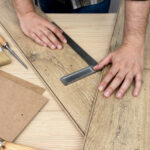 FlooringNovember 25, 2025What Engineered Hardwood Flooring Will Last Longest?
FlooringNovember 25, 2025What Engineered Hardwood Flooring Will Last Longest? FlooringNovember 17, 2025Best Sanding Machine For Hardwood Flooring
FlooringNovember 17, 2025Best Sanding Machine For Hardwood Flooring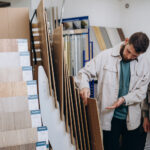 FlooringNovember 10, 2025Local Wholesale Flooring Services Boise, Idaho
FlooringNovember 10, 2025Local Wholesale Flooring Services Boise, Idaho FlooringOctober 28, 2025DIY vs. Store-Bought Hardwood Cleaner Products Worth Trying
FlooringOctober 28, 2025DIY vs. Store-Bought Hardwood Cleaner Products Worth Trying

